Is Your Russia Factory Struggling with rugged designs for cold storage and high throughput? Try a Pallet Changing Machine
Factories in demanding climates like Russia face a unique set of problems. Standard equipment often fails under the stress of extreme cold and the relentless push for high throughput. You might find your production line halting because a machine can't handle the freezing temperatures in your cold storage, or the constant, heavy-duty cycles are causing premature breakdowns. This constant struggle leads to frustrating downtime, expensive repairs, and a ceiling on your factory's output. But there is a solution designed for this exact environment. A rugged pallet changing machine, built specifically to thrive in the cold and handle high-volume operations, can transform your end-of-line process from a bottleneck into a high-speed asset.
Yes, a pallet changing machine with a ruggedized design is the definitive solution for factories in Russia dealing with cold storage and high throughput demands. These machines are engineered with materials and components specifically chosen to operate reliably in sub-zero temperatures. They use specialized hydraulic fluids that don't thicken, seals that don't crack, and electronics protected within heated enclosures. This robust construction ensures consistent, fast cycle times, directly addressing the need for high throughput without succumbing to the harsh environmental challenges.
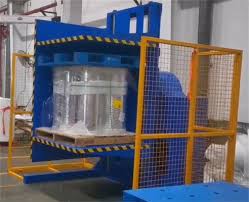
I've spent my entire career in the packaging machine industry, starting on the factory floor and eventually building my own company, SHJLPACK. I’ve seen firsthand how the right piece of equipment can solve a cascade of problems. A problem in one area, like palletizing, doesn't stay in that area. It backs up your entire production line. You have a multi-million dollar production machine sitting idle because you can't get the finished product off the line fast enough. Let’s look deeper into how a specialized machine can solve this for you, addressing the real-world challenges of a demanding industrial environment.
How can a pallet changer withstand extreme cold and still maintain high throughput?
You invest in a machine that promises "heavy-duty" performance, but a few weeks into the Russian winter, it starts to fail. The hydraulics become slow and unresponsive in your -20°C warehouse. The sensors trip for no reason, coated in a thin layer of ice. Your maintenance team is constantly trying to warm up components or bypass frozen parts. This is a common story. It makes you question if any machine can truly handle your environment, and every breakdown chips away at your production schedule and your profits. The solution lies not in a standard machine, but in one engineered from the ground up specifically for the cold.
A pallet changer maintains peak performance in extreme cold by using components and design principles specifically for arctic conditions. This isn't just about adding a layer of insulation. It involves using low-temperature hydraulic oil that maintains its viscosity, fitting the machine with cold-resistant polyurethane seals and hoses that stay flexible, and housing sensitive electronics in heated, NEMA-rated cabinets to prevent condensation and freezing. Throughput is maintained because the core mechanics—the powerful motors, reinforced steel frame, and efficient clamping system—are built for power and simplicity, reducing the number of delicate parts that can fail in harsh conditions.
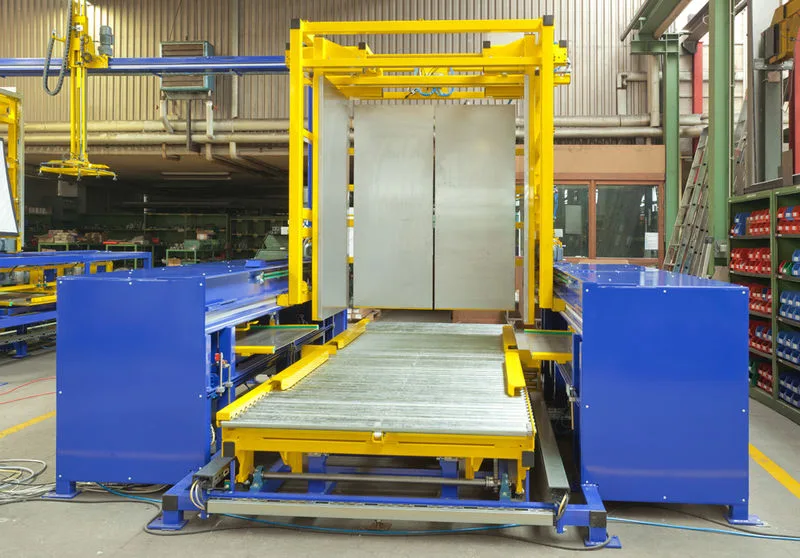
Deeper Dive: Engineering for the Freeze
When we design a machine for a client in a region like Siberia or the Urals, our engineering checklist is completely different. It's not about making a standard machine "better"; it's about a fundamental shift in material science and component selection.
Material Science and Structural Integrity
The first thing to consider is steel. Standard carbon steel can become brittle at low temperatures, a phenomenon known as ductile-to-brittle transition. A sharp impact or even the stress of a normal cycle can cause a catastrophic fracture. For our cold-duty machines, we specify steel alloys with nickel content, which significantly lowers this transition temperature, ensuring the frame remains robust and ductile even at -30°C or -40°C. All welds are performed with special procedures and filler materials to maintain this low-temperature toughness. It’s a detail you can’t see, but it’s the difference between a machine that lasts 15 years and one that fails in its first winter.
The Fluid Power System: A Machine's Lifeblood
Hydraulics are often the first point of failure in the cold. Standard hydraulic oil thickens like molasses, starving the pump, slowing down actuators, and eventually causing the motor to overload. The solution is to use synthetic, wide-temperature-range hydraulic fluids, often designated as "arctic grade." These maintain a stable viscosity. But the oil is only part of it. We look at the entire system.
- Hoses: Standard rubber hoses become stiff and crack. We use specialized thermoplastic or PTFE-lined hoses that retain flexibility.
- Seals: Rod and piston seals in hydraulic cylinders are critical. Standard Buna-N seals will shrink and leak. We use seals made from materials like Viton or low-temperature polyurethane that are rated for the environment.
- Filtration: We may add a pre-heating element to the hydraulic reservoir to ensure the oil is at an optimal temperature before a machine cycle even begins, especially on startup.
Electronics and Control Systems
Modern machines are full of sensors and controlled by PLCs. Condensation is the enemy. As the machine operates, it generates some heat in its cabinet. When it stops, the rapid cooling causes moisture in the air to condense on circuit boards, leading to short circuits. Every control cabinet we build for cold environments is, at a minimum, NEMA 4 rated (to keep moisture out) and contains a thermostat-controlled heater and often a fan. This keeps the internal temperature stable and above the dew point. The wiring itself uses insulation that won't become brittle and crack when flexed in the cold.
| Component | Standard Design | Rugged Cold-Weather Design |
|---|---|---|
| Frame Steel | Standard A36 Carbon Steel | Low-Temperature Carbon Steel (e.g., ASTM A516) or Alloy Steel |
| Hydraulic Oil | ISO 32 or 46 Mineral Oil | Synthetic Arctic-Grade Hydraulic Fluid (e.g., ISO 15) |
| Seals & Hoses | Buna-N (Nitrile) Rubber | Polyurethane or Viton Seals, Thermoplastic Hoses |
| Control Cabinet | NEMA 12 Vented | NEMA 4 Sealed with Thermostat-Controlled Heater |
| Sensors | Standard Inductive/Photoelectric | IP67/IP68 Rated Sensors with -40°C Operating Range |
Won't a new machine just complicate our workflow and require extensive training?
Your team is skilled and efficient with the current process. You bring in a new, automated machine, and suddenly there's anxiety. The floor manager is concerned about a steep learning curve. The operators are worried it will be too complex or, worse, make their jobs obsolete. You have vivid memories of a previous "upgrade" that caused weeks of disruption, with engineers flying in and production grinding to a halt. The fear is that a new machine will create more problems than it solves, at least in the short term. The reality of modern automation, however, is focused on simplification and seamless integration.
A well-designed pallet changing machine actually simplifies your workflow by taking a multi-step, physically demanding manual task and consolidating it into a single, push-button cycle. Modern machines are not the cryptic, complex devices of the past. They are built with intuitive, graphical touchscreen interfaces (HMIs) that can be programmed in any language, including Russian. Training is remarkably fast. An operator can become proficient and confident in just a few hours because the machine is designed to be straightforward and safe, fitting into the existing line rather than forcing a complete overhaul of your process.
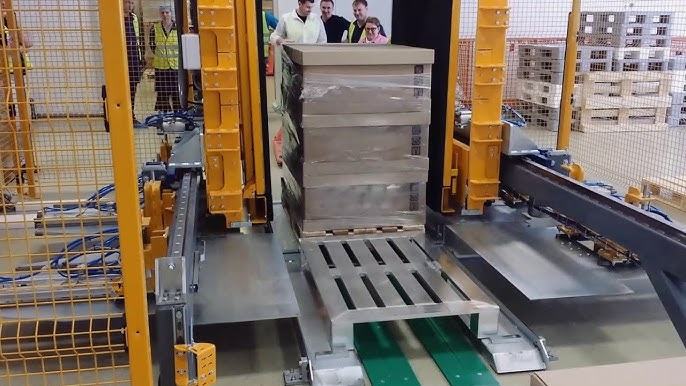
Deeper Dive: From Complex to Intuitive
When I started my career as an engineer on the factory floor, I operated machines that were needlessly complicated. The control panels were a sea of identical buttons and confusing labels. It took weeks to feel comfortable. That experience shaped my entire philosophy at SHJLPACK: a machine must serve the user, not the other way around. Our goal is to make the operator's job easier, safer, and more productive.
The Power of a Good HMI
The Human-Machine Interface is the key. A modern pallet changer's HMI is more like a tablet than an old control panel.
- Graphical Interface: Instead of codes, the screen shows a graphic of the machine. It highlights the active part of the cycle. If there's a fault, it shows exactly where the problem is—for example, "Safety Gate 3 Open."
- Simple Controls: The main screen has large, clear buttons: 'Start Cycle,' 'Stop,' 'Reset,' 'Manual Mode.' It removes ambiguity.
- Multi-Language Support: For a factory in Russia, the entire interface operates in Russian. This eliminates misinterpretation and makes training instantaneous. An operator shouldn't need an English dictionary to run a machine.
- Diagnostics: The HMI provides clear, plain-language diagnostic information. Instead of a "Fault 27B," it will say, "Hydraulic pressure low. Check pump." This empowers your on-site team to troubleshoot simple issues without calling a specialist.
Integration, Not Disruption
I remember a project for a large steel processor. Their biggest fear was downtime during installation. They couldn't afford to shut down their main production line. Our approach was phased. We installed the pallet changer adjacent to the main line. First, we ran it "offline," using it to train their operators with non-critical loads. They got comfortable with the controls in a no-pressure situation. Next, we diverted a small portion of their production to the machine for one shift. We monitored the flow and made minor adjustments to conveyor speeds to ensure a smooth handshake. By the third day, they were so confident that they redirected the entire line's output through the new machine. There was less than two hours of total disruption to their main process.
Redefining the Operator's Role
The machine doesn't replace the operator; it elevates their role. Instead of performing a dangerous and strenuous manual task, the operator becomes a technician. They are now responsible for overseeing a critical automated process, managing the flow of goods, and ensuring quality. This is often a more engaging and less physically taxing job, which can improve morale and reduce staff turnover.
| Aspect of Workflow | Manual Pallet Changing | Automated Pallet Changing |
|---|---|---|
| Process Steps | 5-7 steps (forklift, unstacking, etc.) | 1 step (load pallet, press start) |
| Operator Role | Strenuous Physical Labor | System Supervisor / Technician |
| Training Time | Varies by skill, ongoing safety training | 2-4 hours for full proficiency |
| Consistency | Varies by operator, fatigue is a factor | Identical cycle time, every time |
| Error Potential | High (product damage, incorrect stacking) | Extremely Low (controlled, repeatable motion) |
What about safety and maintenance in such a powerful machine?
You're considering a machine that can clamp and rotate several tons of product. The first thoughts that come to mind are safety-related. What happens if an operator walks into the area while it's moving? What safety standards does it meet? The second thought is about maintenance. Your factory might be in a remote location. The idea of a complex machine breaking down and having to wait weeks for a specialized technician or a proprietary part from another country is a nightmare. It could wipe out all the efficiency gains. These are valid, critical concerns that must be addressed by the machine's fundamental design.
Modern pallet changers are built with safety as the primary design principle, not an afterthought. They use a multi-layered system of physical barriers, light curtains, and redundant safety circuits that comply with international standards like ISO 13849. This makes it virtually impossible for an operator to be in a dangerous position during a cycle. For maintenance, the philosophy is about reliability and accessibility. These machines are built with internationally recognized, off-the-shelf components from brands like Siemens, Schneider Electric, and SEW-Eurodrive. This means spare parts and support are available locally in Russia, and your own maintenance team can handle most service, guided by clear manuals and diagnostic tools.
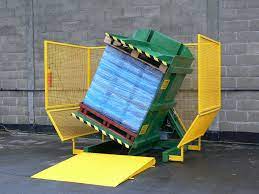
Deeper Dive: Building for Safety and Serviceability
When I established SHJLPACK, I made a promise to myself and my clients. We would build machines that were not only productive but also inherently safe and easy to maintain. A machine that is constantly down for repair or is a danger to the people around it is not a solution; it's a liability.
The Layers of Modern Safety
We design safety using a concept often called the "Swiss Cheese Model." One layer might have a hole, but multiple layers ensure nothing gets through.
- Physical Guarding: The first layer is robust physical fencing that defines the machine's operating envelope. The access gates are fitted with safety interlock switches. If a gate is opened, the machine immediately stops in a safe state.
- Presence Sensing: The entry and exit points for pallets are protected by light curtains. These are arrays of infrared beams. If any beam is broken by a person, the machine stops instantly. This allows product to flow in and out but protects people.
- Controlled Access: For maintenance, a specific procedure is required. A key is used to switch the machine to a maintenance mode, which disables all automatic movements. The person entering the cell takes the key with them, ensuring no one can restart the machine from the outside while they are inside.
- Emergency Stops: E-stop buttons are placed at all operator stations and access points. These are wired through a dual-channel safety relay, a specialized component that ensures the stop signal works even if one of the circuits fails.
The Philosophy of Easy Maintenance
My experience on the factory floor taught me the frustration of proprietary parts. Waiting six weeks for a special sensor to arrive from Germany is unacceptable. That's why we build our machines like this:
- Standard Components: The motor is from a brand like SEW-Eurodrive. The PLC is a Siemens. The sensors are from Banner or IFM. These are global leaders with distribution networks and technical support in every major industrial region, including Russia. Your local supplier will have these in stock.
- Clear Labeling: Every wire, every terminal, and every pneumatic line is clearly labeled. This corresponds to detailed schematics (electrical, hydraulic, and pneumatic) that we provide in both English and Russian. A technician can easily trace a circuit or identify a component.
- Accessibility: We design with the maintenance person in mind. Hydraulic power packs are placed for easy access to filters and gauges. Lubrication points are grouped together in central blocks. Panels can be removed easily to inspect key mechanical parts.
| Feature | Description | Benefit for a Russian Factory |
|---|---|---|
| Light Curtains | Infrared safety barriers at openings. | Protects operators without needing physical doors that can slow cycle times. |
| Safety Interlock Gates | Physical gates that stop the machine when opened. | Ensures no one can enter the active machine area during a cycle. |
| Dual-Channel E-Stops | Redundant emergency stop circuit. | Guarantees a safe stop even in the event of a single component failure. |
| Standard Brand Parts | Use of components from global brands like Siemens, SEW, etc. | Spare parts and technical support are available locally, reducing downtime. |
| Labeled Schematics | All wires and components are labeled and correspond to schematics provided in the local language. | Your own maintenance team can quickly diagnose and repair most issues. |
| Remote Diagnostics | Optional secure remote access to the PLC for troubleshooting. | Our engineers can help diagnose a problem without an expensive site visit. |
My final take on Pallet Changer
I've seen many factories transform their operations. I remember a client in Mexico, Javier Morales, who ran a large steel mill. He faced challenges similar to those in Russia: high costs, aging equipment, and pressure to increase throughput. His end-of-line packaging was a major bottleneck. Forklift drivers were trying to manually transfer heavy loads of steel parts, which was slow, dangerous, and caused product damage. We worked with him to install a heavy-duty pallet inverter. The result was immediate. The packaging bottleneck disappeared. This allowed his high-speed production lines to run at their full potential for the first time. He later told me that this single investment helped him reduce operational costs by nearly 10% and was a key step in his plant's modernization. This is the power of targeting a critical bottleneck with the right, robust solution. It doesn't just improve one small step; it lifts the performance of the entire factory.
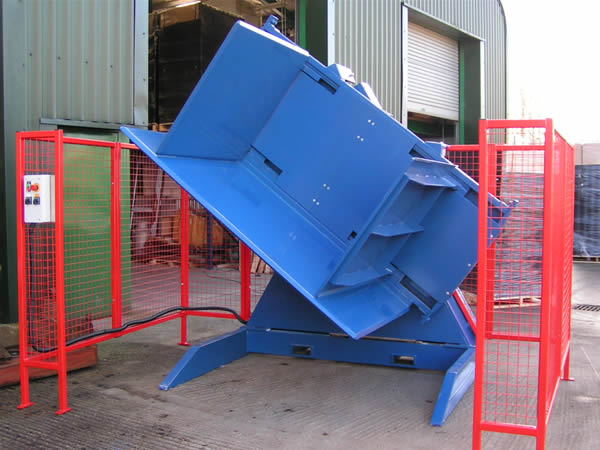
Conclusion
A rugged pallet changer is a strategic tool. It solves the unique challenges of cold and high throughput in Russia, boosting efficiency, safety, and ultimately, your bottom line.




